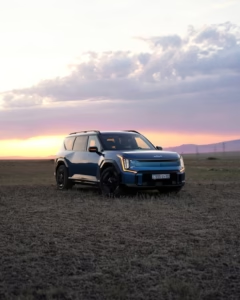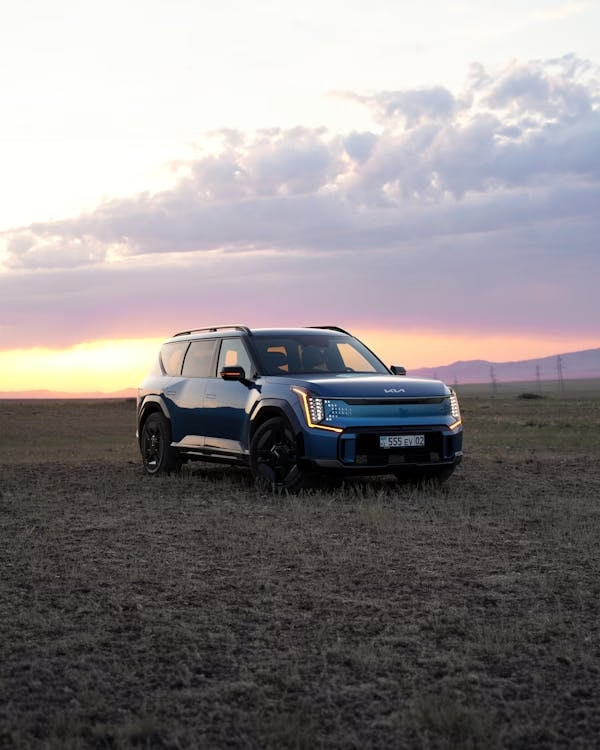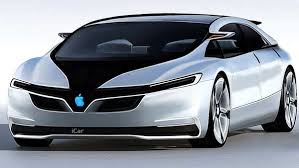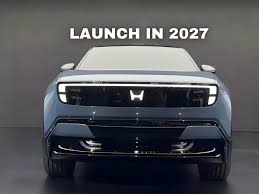Introduction
Electric cars are proliferating without taking any breaks or pauses. The Indian Electric Cars market is booming and growing because of environmental concerns, which have also been helped by government support and improvements in battery technology. With more and more consumers seeking greener options to conventional petrol and diesel vehicles, the sale of electric vehicles has picked up across segments. Out of these, large 7-seater electric cars are creating quite a buzz, with families and people seeking space and green credentials being the biggest buyers.
The popularity of 7-seater electric SUVs and MPVs stems from their capacity to seat bigger families or groups comfortably, and they are perfect for daily travel and road trips. This article will guide you about the top 8 new 7-seater electric cars launching in India in 2025 and 2026. From luxury models with cutting-edge technology to budget-friendly and utility-oriented vehicles, these cars are poised to redefine electric mobility for Indian families.

Why Choose a 7-Seater Electric Car?
Choosing a 7-seater model brings functional benefits over and above environmental advantages. 7-seaters have plenty of space and flexibility to easily fit bigger families or groups without sacrificing legroom or cargo capacity. The ability to easily convert between seating and loading modes makes electric MPVs and SUVs with seven seats perfect for school drop-offs, family visits, and weekend excursions. The extra comfort amenities commonly included in such models make for a comfortable ride for every passenger, whether traveling a short distance or a long journey.
Advances in battery technology are also increasing the driving range of 7-seaters so that longer journeys can be undertaken without constant recharging stops. These developments make it more practical and easier than ever to buy and run 7-seater electric cars, making them the intelligent option for family transportation in the future.
Select Top Upcoming 7-Seater Electric Cars
- Range and Battery Capacity: The driving range between charges is the most important, directly tied to the vehicle’s battery capacity. A larger-capacity battery usually means more driving distance, which lessens range anxiety, a significant fear for most Electric car purchasers.
- Pricing and Affordability: Pricing continues to be a make-or-break proposition for most consumers, particularly in the family car market. 7-seater Electric cars must be priced with a balance of cost and value to make electric mobility more accessible to more people.
- Features and Technology: Potential buyers nowadays anticipate their cars to be bestowed with the best technology and comfort features. These include updated driver-assistance technology, infotainment, intelligent connectivity, safety features, and interior comforts like adjustable seats and climate control. A 7-seater electric vehicle incorporating advanced technology improves the driving experience and distinguishes itself from others.
- Anticipated Launch Timelines: Cars nearer the launch schedule create higher anticipation and give future buyers a better sense of availability. The list precedes models that will launch between 2025 and 2026, providing a realistic picture of what’s arriving soon on Indian shores.
Top 8 Upcoming 7-Seater Electric Cars in India
- Maxus Mifa 9 is expected to be launched by the end of May 2025.
- The expected ex-showroom price is Rs. 65–70 lakh; it is a premium player in the electric MPV segment.
- The MG M9 has a 90 kWh battery pack and an estimated WLTP range of around 430 km, which is adequate for intra-city and occasional, more extended trips.
- The interior of the MPV contains three rows of seats, and the middle row features powered ottoman seats with heating, ventilation, and massage options.
- Dual-pane panoramic sunroof, 64-color ambient lighting, and rear entertainment screens.
- The MG M9 has a 12-inch infotainment touchscreen display, a 7-inch digital instrument panel, a 12-speaker sound system, wireless charging, and a 360-degree camera.
-
Mahindra XUV.e8.
- The Mahindra XUV.e8 will likely go on sale in India by late 2025, with an approximate price between Rs. 26 lakh to Rs. 30 lakh.
- The XUV.e8 is expected to be constructed on Mahindra’s INGLO platform, with a dual-motor configuration for all-wheel drive (AWD) abilities.
- It will feature a 77 kWh battery pack with an estimated range of approximately 400–500 km on a single charge.
- The SUV will feature an expansive cabin with three rows of seating, cutting-edge infotainment systems, and high-end materials.
- Expect high-end safety features like multiple airbags, electronic stability control (ESC), and driver assistance systems.
- The XUV.e8 will blend Mahindra’s tough SUV heritage with contemporary electric technology to provide a spacious, loaded electric SUV that is competitively priced.
-
Kia Carens EV
- Kia Carens Electric cars will likely launch in India in mid-2025 with an anticipated ex-showroom price of around Rs. 16 lakh.
- Kia Carens Electric Vehicle will likely come in 6- and 7-seater variants, offering families flexibility.
- The inside will likely feature twin digital screens, front-ventilated seats, and a roomy interior ideal for long-distance driving.
- With its competitive price tag and family-oriented attributes, the Kia Carens Electric Vehicle should attract urban families looking for an environmentally friendly solution to conventional MPVs.
-
Tata Safari EV
- Tata Safari Electric cars is anticipated in India in August 2025, with an estimated price of Rs. 26 lakh to Rs. 30 lakh.
- The Safari EV will carry forward the ICE version’s bold design cues with modifications to include electric powertrain components.
- It will be expected to deliver a strong performance that is appropriate for city usage and off-road performance.
- The SUV will feature premium attributes like a panoramic sunroof, a state-of-the-art infotainment system, and several driving modes.
- Tata Safari EV is searching for generous and strong electric SUV buyers; it has set a target to compete against offerings like the Mahindra XUV.e8 and the BYD eMAX7.
-
Hyundai Palisade EV
- The Hyundai Palisade EV will arrive in India by the end of 2025, with an estimated price of Rs. 70 lakh.
- The Hyundai Palisade Electric cars
- will likely feature a luxurious three-row interior with premium materials and high-end technology.
- Look forward to amenities such as a big touchscreen infotainment screen, digital instrument cluster, and sophisticated driver assist features.
- With its luxury, roominess, and electric frugality, the Hyundai Palisade EV will likely resonate with high-income families who want a premium electric SUV.
-
BYD Tang EV
- The BYD Tang EV will likely be launched in India by 2025, priced between Rs. 35–40 lakh.
- The BYD Tang EV is expected to range around 500–600 km on one charge.
-
Kia EV9
- Kia EV9 has been launched in India in October 2024 at Rs. 1.3 crore as the starting price for the top-of-the-line GT-Line variant.
- The EV9 has a dual-motor configuration churning out 384 hp and 700 Nm of torque, offering strong performance.
- The SUV has a futuristic look with vertically arranged LED headlights and an expansive three-row interior.
-
Skoda Vision 7S
- Skoda Vision 7S will be launched in India in 2025 with an estimated price of Rs. 70 lakh to Rs. 75 lakh.
- The Vision 7S is expected to have a daring design with eco-friendly materials and a large interior.
Comparative Overview
Here’s a clean and informative comparison table of the top 8 upcoming 7-seater electric cars in India:
| Model | Expected Launch | Price Range (Rs. lakh) | Battery Capacity | Estimated Range (km) | Key Highlights | Ideal For |
| MG M9 (Maxus Mifa 9) | May 2025 | 65 – 70 | 90 kWh | ~430 | Luxury MPV, powered ottoman seats, ADAS Level 2, panoramic sunroof | Luxury-seeking families |
| Mahindra XUV.e8 | End 2025 | 26 – 30 | 77 kWh (expected) | 400 – 500 (est.) | Rugged SUV design, AWD, spacious interior, advanced infotainment | Practical SUV buyers, road-trippers |
| Kia Carens EV | Mid 2025 | ~16 | ~60 kWh (expected) | ~400 (est.) | Affordable MPV, 6/7-seat options, family-friendly features | Budget-conscious families |
| Tata Safari EV | Aug 2025 | 26 – 30 | ~75 kWh (expected) | ~400 (est.) | Bold SUV look, off-road capable, premium tech | Urban and adventure-oriented families |
| Hyundai Palisade EV | Late 2025 | ~70 | ~90 kWh (expected) | ~450 (est.) | Premium 7-seater, spacious cabin, ADAS, luxury features | Affluent families, premium SUV buyers |
| BYD Tang EV | 2025 | 35 – 40 | ~80 kWh | 500 – 600 (est.) | Long range, premium comfort, panoramic sunroof | Long-distance travelers, value seekers |
| Kia EV9 | Oct 2024 (launched) | ~130 | Dual-motor AWD | ~450 | Flagship SUV, futuristic design, Level-3 ADAS, top-tier features | Tech-savvy premium buyers |
| Skoda Vision 7S | 2025 | 70 – 75 | ~85 kWh | ~450 (est.) | Sustainable design, luxury interiors, advanced digital systems | Eco-conscious luxury buyers |
Challenges and Opportunities for 7-Seater EVs in India
India has registered good progress in setting up public and private Electric car charging facilities, but the network remains sparse, particularly in non-metro cities. High-speed charging facilities are needed along highways for long-distance travel with high-capacity 7-seater EVs, but these are inadequate. Even larger Electric cars generally require higher-capacity chargers because of their larger batteries, so extensive infrastructure support is even more critical.
Consumer perception and adoption patterns also drive the segment’s expansion. While a growing awareness of EVs exists, numerous potential customers remain uncertain regarding factors such as total cost of ownership, servicing, charging infrastructure, and long-term dependability. The buying decision is more conservative and price-conscious for 7-seaters, which households or fleet managers commonly purchase. Persistent education and real-life examples will persuade this generation to switch from ICE cars to electric models.
Subsidies and government policies significantly influence the EV ecosystem. State and central government schemes such as FAME II, lower GST on Electric vehicles, and exemption from road tax have decreased the upfront cost barrier.
Conclusion
The launch of 7-seater Electric cars can be adopted without compromising space, comfort, or performance. Ranging from premium electric MPVs such as the MG M9 and Hyundai Palisade EV to the more functional varieties such as the Mahindra XUV.e8, Tata Safari EV, and Kia Carens EV, the new line-up has something to offer every kind of buyer. Whether looking for upscale amenities, range, or affordability, these models highlight how quickly the electric vehicle market changes to accommodate varied consumer demand.
For those families looking to upgrade their car in the next few years, considering an electric 7-seater is not only a progressive move—it’s also an intelligent one. Reduced running costs, increasing charging points, expanding battery ranges, and improved on-the-road comfort make EVs an ever more viable option than conventional petrol or diesel cars. Technology and government incentives sweeten the package, too, so now is an excellent time to begin planning for an electric future.
With increasing awareness and improved infrastructure, 7-seater EVs will be instrumental in redefining Indian family mobility—uniting the environmental conscience with the convenience of daily life.
FAQs
- What would the cost range of 7-seater electric cars in India be?
Future 7-seater EVs in India will cost between Rs. 16 lakh and Rs. 1.3 crore, based on the brand, specifications, and category.
- Which one is the most affordable 7-seater Electric car?
The Kia Carens EV, to be launched towards mid-2025, will probably be the cheapest at around Rs. 16 lakh.
- What will be the predicted range of these new EVs?
All these cars will range between 400 km and 600 km on a full charge, depending on battery capacity and model.
- Will the EVs be capable of fast charging?
Most will support DC fast charging, allowing 0–80% charge within 30–45 minutes based on the charger and battery size.
- Is there a government subsidy for 7-seater EVs?
Most government subsidies (such as under FAME II) currently prefer smaller EVs. Though some state-level incentives might be available for larger EVs, updates will soon include larger passenger cars.
- Which EV is suitable for intercity travel?
The BYD Tang EV, which has an estimated range of 500–600 km, is a good choice for long-distance travel. The Mahindra XUV.e8 and Hyundai Palisade EV are also suitable for highway use.
- When will the Mahindra XUV.e8 and Tata Safari EV come out?
Mahindra XUV.e8 is expected to arrive by late 2025, and the Tata Safari EV could come by August 2025.
- Are 7-seater EVs appropriate for Indian roads and conditions?
Yes. Most models, particularly SUVs such as the XUV.e8 and Safari EV, are built with Indian road conditions in mind and come with high ground clearance, rugged suspension, and roomy interiors.
- How much do the maintenance costs of a 7-seater EV amount to?
EVs tend to have lower maintenance costs compared to petrol/diesel vehicles owing to fewer moving parts, the absence of engine oil changes, and regenerative braking mechanisms.
- Should I wait for a 7-seater EV or purchase an ICE 7-seater?
If you aim for long-term savings, future-proofing, and long-term tech, waiting for these models is best. But consider your current needs, budget, and local infrastructure before you decide.





